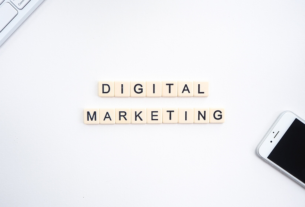Whether it’s on your website, in an email, or on social media, if you’re in charge of your company’s digital communication, you might be asking how to utilise emojis in your marketing the most effectively, or if you even need to use them at all.
This article will discuss the benefits and drawbacks of using emojis, the effects they have on humans according to scientific studies, and the best ways to utilise emojis in various forms of marketing and promotion.
Why you make use of emojis in your marketing
Emojis are now often used in communications. Emoji usage is increasing globally;
10 billion emojis are transmitted each day
Emoji usage on the internet is at 92%.
It’s crucial to communicate with your target audience using their language and even their metaphors. Emojis may personalise your brand and foster loyalty and trust among your target audience.
At the best Digital Marketing Institute in Thane we teach our students how making an emotional connection with our audience is a key component of our work as marketers. Emojis may be used to convey more than simply fun and whimsy in a message. In contrast to a dry sentence that may be understood in several ways, an emoji can give context and subtlety.
- Emojis express non-verbal communication by capturing it. Contrary to popular belief, an emoji, such as “woman health worker,” “grinning cat with happy eyes,” or “pile of poo,” is probably only worth one to five words at most. However, a wink or an eye roll might go a long way toward illustrating your point.
- Emojis can help you establish an emotional connection with your audience and can make your content stick in their minds longer. Emoji use with words stimulates brain regions that are “related with numerous functional brain networks, such as word-processing, emotion identification, and memory recall,” according to recent research employing fMRI machines that examine brain activity.
Emojis may increase the credibility of your marketing communications. Another study found that compared to communications with no emoji or an unsuitable emoji, messages with an acceptable emoji were assessed as “easier to grasp and more convincing.”
- Emojis make your messages more memorable. Because of their widespread popularity, they may no longer be as new as they were a few years ago, but they may still make a scene “pop” by adding colour, comedy, or even by suggesting where our eyes should turn next.
- Emojis boost participation all around. Emojis improve engagement in your digital communication, whether it be through social media, email marketing, or SMS, according to a large body of research.
At the best Digital Marketing Course in Navi Mumbai, we ensure that students know that as marketers, it is important to make the most of all the resources at our disposal to attract customers’ attention, establish rapport, and increase traffic, leads, and sales.
All of those goals and more may be achieved with effective emoji use.
Why emojis shouldn’t be used in marketing
Emoji usage in corporate communication, however, might not be appropriate for all brands or individuals, at least not at this time.
- Emojis could make you appear unprofessional. As proficient copywriters and marketers are aware, you must maintain your “brand voice.” Emoji usage may have an immediate, detrimental effect on your capacity to connect and establish trust in more traditional sectors. They could be accused of donning sweatpants to a cocktail reception in a little black dress or flip flops to a formal event.
- The meaning of an emoji may “lose in translation.” Contrary to popular belief, emojis are not universal. Emojis vary in significance depending on the country they are used in or the age group they belong to.
- Emoji usage varies by generation. The meaning and context of emoticons are always evolving, just like new fashion trends. Emojis also suffer from inconsistent display between platforms, such as Mac, Windows, Chrome, Facebook, and others. While there are occasions when the distinction is only a question of artistic preference, other times the emoji might convey a whole different mood.
You must determine whether the use of emojis can enhance or complement your marketing, advertising, and communication after balancing the advantages and downsides.




